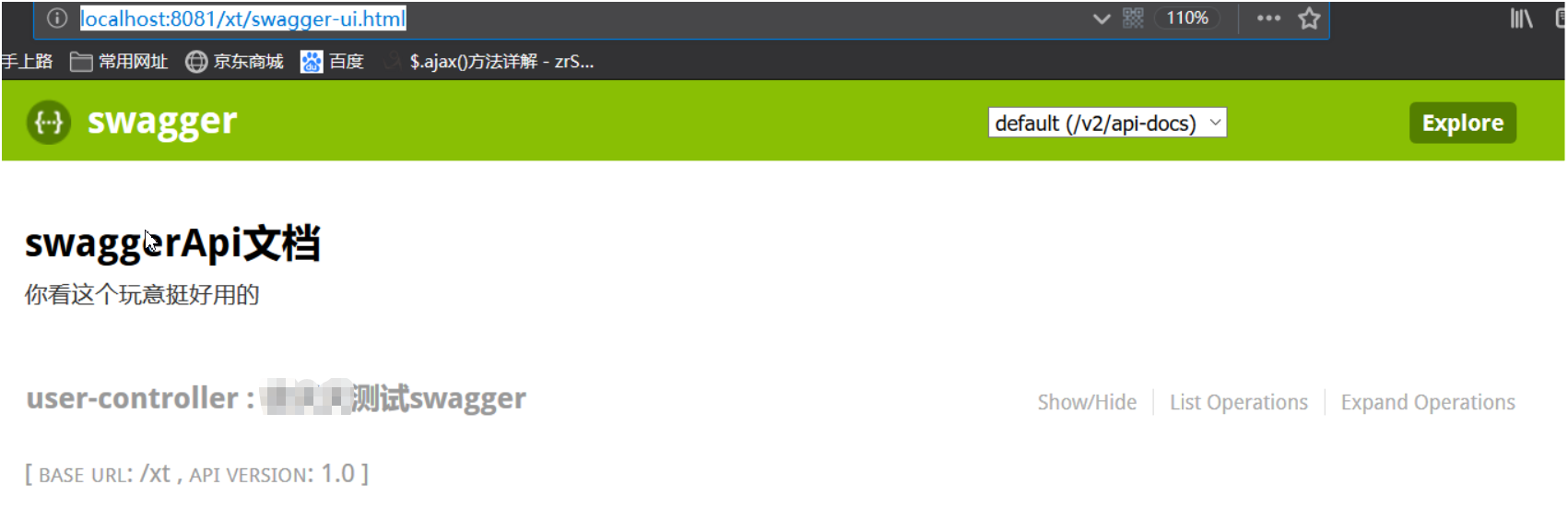- 在pom.xml文件中配置(用的2.6.1版本,2.9.2有点丑)
<properties> <!--<spring.swagger2.version>2.9.2</spring.swagger2.version>--> <spring.swagger2.version>2.6.1</spring.swagger2.version> </properties> <dependency> <groupId>io.springfox</groupId> <artifactId>springfox-swagger2</artifactId> <version>${spring.swagger2.version}</version> </dependency> <dependency> <groupId>io.springfox</groupId> <artifactId>springfox-swagger-ui</artifactId> <version>${spring.swagger2.version}</version> </dependency>
- 写配置类
package com.xt.mybatisplusstudy.config; import org.springframework.context.annotation.Bean; import org.springframework.context.annotation.Configuration; import springfox.documentation.builders.ApiInfoBuilder; import springfox.documentation.builders.PathSelectors; import springfox.documentation.builders.RequestHandlerSelectors; import springfox.documentation.service.ApiInfo; import springfox.documentation.spi.DocumentationType; import springfox.documentation.spring.web.plugins.Docket; import springfox.documentation.swagger2.annotations.EnableSwagger2; @Configuration @EnableSwagger2 public class Swagger2Config { @Bean public Docket createRestApi() { return new Docket(DocumentationType.SWAGGER_2) .apiInfo(apiInfo()) .select() .apis(RequestHandlerSelectors.basePackage("com.xt.mybatisplusstudy.controller"))//在这写上你的controller路径 .paths(PathSelectors.any()) .build(); } private ApiInfo apiInfo() { return new ApiInfoBuilder() .title("swaggerApi文档") // .description("简单优雅的restfun风格") .description("你看这个玩意挺好用的") .termsOfServiceUrl("") .version("1.0") .build(); } }
- 注释介绍
常用注解: - @Api()用于类; 表示标识这个类是swagger的资源 - @ApiOperation()用于方法; 表示一个http请求的操作 - @ApiParam()用于方法,参数,字段说明; 表示对参数的添加元数据(说明或是否必填等) - @ApiModel()用于类 表示对类进行说明,用于参数用实体类接收 - @ApiModelProperty()用于方法,字段 表示对model属性的说明或者数据操作更改 - @ApiIgnore()用于类,方法,方法参数 表示这个方法或者类被忽略 - @ApiImplicitParam() 用于方法 表示单独的请求参数 - @ApiImplicitParams() 用于方法,包含多个 @ApiImplicitParam 具体使用举例说明: @Api() 用于类;表示标识这个类是swagger的资源 tags–表示说明 value–也是说明,可以使用tags替代 但是tags如果有多个值,会生成多个list @ApiOperation() 用于方法;表示一个http请求的操作 value用于方法描述 notes用于提示内容 tags可以重新分组(视情况而用) @ApiParam() 用于方法,参数,字段说明;表示对参数的添加元数据(说明或是否必填等) name–参数名 value–参数说明 required–是否必填 @ApiModel()用于类 ;表示对类进行说明,用于参数用实体类接收 value–表示对象名 description–描述 都可省略 @ApiModelProperty()用于方法,字段; 表示对model属性的说明或者数据操作更改 value–字段说明 name–重写属性名字 dataType–重写属性类型 required–是否必填 example–举例说明 hidden–隐藏 @ApiIgnore()用于类或者方法上,可以不被swagger显示在页面上 比较简单, 这里不做举例 @ApiImplicitParam() 用于方法 表示单独的请求参数 @ApiImplicitParams() 用于方法,包含多个 @ApiImplicitParam name–参数ming value–参数说明 dataType–数据类型 paramType–参数类型 example–举例说明 - 访问
http://localhost:8081/xt/swagger-ui.html 访问原则-->ip+项目名+swagger-ui.html
- 效果示例

- 遇到的一个坑
//@Api(value = "登录接口",tags = "login control") 坑 tags中如果写中文,swaggerui接口无法展开 @Api(description = "登录接口")